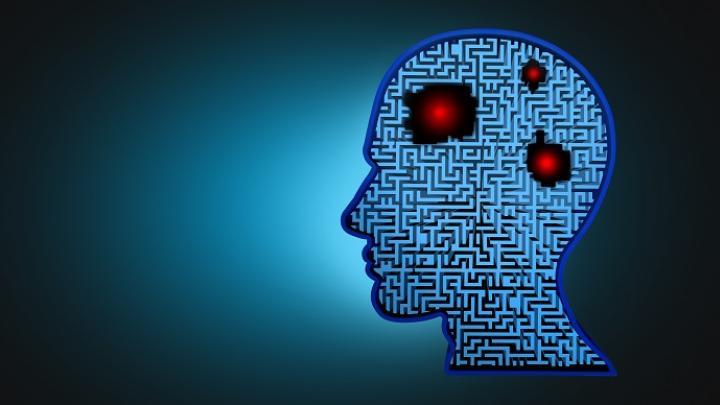Hypercomplex fractals after hours, or how engineer rests
 A shape with fractal features, Adobe Stock
A shape with fractal features, Adobe Stock
Quaternions, octonions or sedenions are hypercomplex numbers, i.e. 'extensions of complex numbers to multidimensional spaces'. For some researcher,s dealing with fractal sets on their basis may be an escape from everyday laboratory work. Professor Andrzej Katunin talks to PAP - Science in Poland about the history of the search for hypercomplex fractals.
Fractals are mathematical creations presented graphically as very complex objects with specific features. One of them is self-similarity, which means that a fractal viewed at the micro- and macro scale looks the same. The classics include von Koch, Peano, Hilbert and Gosper curves, Sierpinski triangles (and a carpet), Menger sponge, Julia, Fatou and Mandelbrot sets.
A recent work by Professor Andrzej Katunin from the Silesian University of Technology in Gliwice concerns hypercomplex fractals. 'The term +hypercomplex fractals+ refers to a certain class of objects that are constructed in multidimensional spaces. The prefix 'hyper' means that there are many dimensions: four or more', says Katunin, promoter of science and mathematics enthusiast, author of the book Fraktale. Matematyczne potwory, które odmieniły postrzeganie świata (Fractals. Mathematical monsters that changed the perception of the world).
Such fractals can be obtained from the so-called recursive formulas, which in simple terms means multiple repetitions of one simple, mathematical operation.
'In this case, we are dealing with the Mandelbrot set', says the scientist from the Silesian University of Technology. Benoit Mandelbrot was a Warsaw-born French mathematician who revolutionized the science of fractals. He worked at the Centre National de la Recherche Scientifique in Paris, and then at the University of Lille. From 1957 he worked in the USA for IBM, where he had access to modern computers. He studied the work of two French mathematicians, Gaston Julia and Pierre Fatou, who had worked on such geometric objects several decades earlier. He summarized their work, and used computers to generate images that were called fractals. 'The works of Julia and Fatou were forgotten, considered a mathematical curiosity, but Mandelbrot returned to them and generalized it all within his set', reminds Professor Andrzej Katunin.
Mandelbrot also set directions for specific applications for fractals', the scientist adds. Today, fractals are used in virtually all fields of science - economics, chemistry, mechanics, physics, astronomy, etc. Fractal patterns and methods are used in psychology, linguistics, musicology and other fields. In practice, fractals help to make predictions and obtain specific properties of materials. Fractal analysis of market fluctuations, used in economics and finance, is now considered a classic tool, allowing to predict, with high probability, a financial market crash or volatility of exchange rates. In biology and medicine, fractals help understand the structure and functioning of many systems and structures, for example the nervous system, lungs or bone tissue. Thanks to the properties of fractals, they gain additional features, e.g. stiffness and lightness at the same time.
Hypercomplex fractals, which Professor Andrzej Katunin's latest work concerns, are further generalizations of the basic Julia and Mandelbrot sets.
'The Mandelbrot set is defined by complex numbers. A complex number is two-dimensional - it has a real and imaginary part, it is high school knowledge. By generalizing these sets, we can get very interesting shapes and properties', he says.
As an example of another generalization of complex numbers, Professor Andrzej Katunin mentions quaternions - four-dimensional hypercomplex numbers. They were discovered by the 19th century Irish mathematician William Hamilton.
'Hamilton was looking for so-called complex triples; he was trying to go from two-dimensional complex numbers to three-dimensional ones. He needed it for specific physical applications, to describe certain problems of mechanics. He worked on it for so long that it became a ritual. Every day when he came down to breakfast and saw his family, the children would ask him, +Well, Papa, can you multiply triplets?+ He would reply: + No, I can only add and subtract them+. It continued for years', says Katunin. 'He failed to develop complex triples. He did develop quaternions, which now have a wide range of applications, ranging from mechanics or dynamics in robotics - to issues such as the mathematical description of the movement of celestial objects, the control of spaceships, etc. Quaternions have real, physical application. Similarly, visualization algorithms in computer games, in virtual reality - are also based on quaternions'.
'Within quaternions, fractal sets can also be defined, which means a de facto generalization of the Mandelbrot basic set to four dimensions. This was done at the turn of the 1990s - then the first such structures were described, and the work on them continues to this day', the professor reminds. He adds that in the case of these multidimensional algebras, basic mathematical operations stop working. 'The higher the dimensionality of a given algebra, the worse it gets with these operations. For us it is obvious that multiplying two non-zero numbers will also result in a non-zero number. In the case of hypercomplex numbers, this is not necessarily the case. By multiplying a nonzero hypercomplex number by a nonzero hypercomplex number we can get zero. The higher we go, the stranger these properties become', he describes.
Prof. Katunin, who professionally deals with issues such as fatigue and cracking of composite materials, non-destructive testing of materials and methods of damage identification, is interested in the mathematical aspects of hypercomplex fractals. 'I approach it as a side project, because the issues I work on on a daily basis are very tangible, engineering problems. The science that I develop in the lab is largely based on observing phenomena and confirming them. Theory is strongly related to the observed phenomena. In the case of hypercomplex fractals, it is difficult to find concrete physical applications. They do exist, but they are extremely complicated from a theoretical point of view. Some scientists, myself included, just work with hypercomplex numbers - constructing and studying hypercomplex fractals - for fun'.
The aforementioned, although not very numerous, applications of hypercomplex numbers concern the description of the electromagnetic field, issues of quantum mechanics, genomic analysis of DNA, he adds. 'Quaternions or octonions (another generalization that eight-dimensional hypercomplex algebra deals with) are used everywhere. They are also used in elementary particle physics and as support for the so-called fractal theory of the Universe - a certain parallel theory that is being developed in opposition to currently accepted theories of the Universe - the Big Bang theory and the inflation theory - to explain how the Universe came into being and how it works'.
Interview by Anna Ślązak, PAP - Science in Poland
zan/ bar/ kap/
tr. RL
Przed dodaniem komentarza prosimy o zapoznanie z Regulaminem forum serwisu Nauka w Polsce.

















